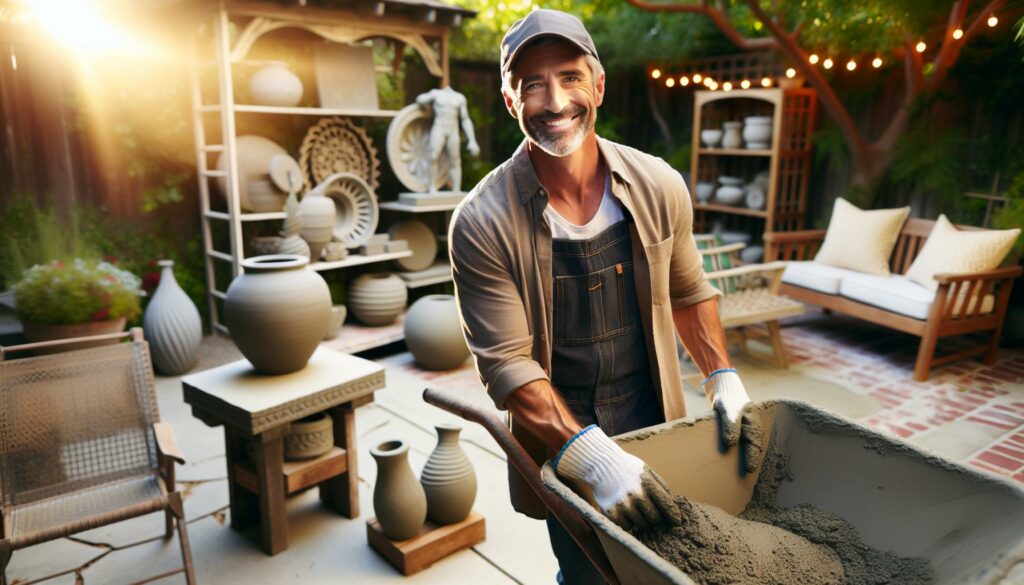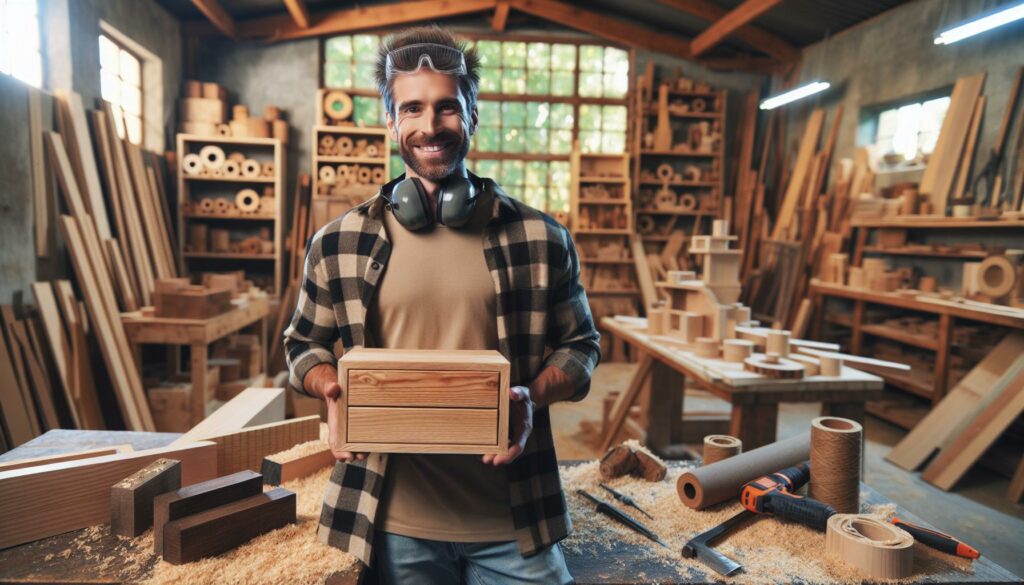Concrete isn’t just for sidewalks and foundations anymore. It’s becoming a go-to material for DIY enthusiasts looking to add a touch of creativity to their homes and gardens. I’ve discovered that with a little bit of know-how and some basic tools, you can transform concrete into stunning pieces of art or functional items that elevate your space.
Key Takeaways
- Versatile Material: Concrete can be used for a wide range of DIY projects, from functional items like furniture to decorative elements like planters, allowing for personal expression.
- Cost-Effective Solution: Engaging in DIY concrete projects can save money compared to purchasing pre-made alternatives, making it an economical choice for home improvement.
- Customization Opportunities: Homeowners can personalize their concrete creations in terms of design, color, and size, ensuring that each piece complements their unique style and space.
- Durability and Longevity: Concrete is a robust material that withstands wear and tear, making it suitable for both indoor and outdoor applications.
- Skill Enhancement: Working on DIY concrete projects boosts crafting skills and self-confidence, empowering individuals to tackle more complex home improvement tasks.
- Safety First: Proper safety measures, such as wearing protective gear and ensuring a well-ventilated workspace, are essential when working with concrete to prevent accidents and ensure successful outcomes.
DIY Concrete Projects
DIY concrete projects offer a creative way to enhance living spaces while utilizing a versatile material. With the right knowledge and tools, I can craft functional and artistic pieces that express personal style.
Benefits of DIY Concrete Projects
- Versatility: DIY concrete projects range from planters to furniture, allowing for an array of creative expressions.
- Cost-Effective: Creating items from concrete often saves money compared to purchasing ready-made alternatives.
- Customization: I can personalize designs, colors, and sizes, ensuring every piece fits my aesthetic and spatial requirements.
- Durability: Concrete offers strength and longevity, making it suitable for both indoor and outdoor applications.
- Skill Development: Engaging in DIY projects enhances my crafting skills and boosts confidence in home improvement tasks.
- Concrete Mix: Standard pre-mixed bags enable quick and effective concrete preparation.
- Molds: Reusable or disposable molds, such as silicone or plastic containers, shape concrete creations like planters or coasters.
- Rebar and Wire: Reinforcement tools strengthen larger structures, ensuring stability and reducing cracking.
- Sealants: Surface sealants protect finished projects, enhancing durability and resist moisture.
- Color Additives: Pigments can create visually appealing variations in concrete, allowing for unique finishes in designs.
Popular DIY Concrete Projects
DIY concrete projects offer versatility, allowing me to create both functional and artistic elements for my space. Here are several popular options to consider.
Concrete Planters
Concrete planters enhance outdoor and indoor spaces with their durability and modern aesthetic. I can create various shapes and sizes, from rectangular window boxes to geometric sculptures. By using pre-made molds or building custom ones, I can personalize each planter with color additives or unique textures. Adding drainage holes ensures proper water flow, preventing plant saturation.
Concrete Furniture
Concrete furniture pieces combine strength and style to elevate any room. I can craft concrete tabletops, benches, and stools, offering an industrial touch to my decor. Utilizing reinforcement techniques, such as adding rebar, enhances stability and prevents cracking. Pairing concrete with wood or metal elements adds contrast and warmth, enriching the overall design.
Decorative Concrete
Decorative concrete serves as an artistic outlet, transforming ordinary surfaces into striking designs. I can explore techniques such as stamping, staining, and painting to personalize my projects. Stenciling patterns or adding mosaics provides endless possibilities for customization. Applying sealants ensures the longevity of the decorative finish, making my work both beautiful and resilient.
Techniques for Working with Concrete
Working with concrete requires specific techniques to ensure quality results. Mastering these methods allows for successful completion of varied DIY projects.
Mixing Concrete
Mixing concrete involves combining dry ingredients and water in appropriate proportions. Use a wheelbarrow or mixing tub for small projects and a concrete mixer for larger tasks. I’ve found that a typical mix ratio is one part cement, two parts sand, and three parts gravel, along with water to achieve a workable consistency. Consistency is key; aim for a thick, cake-like texture. Using additives like plasticizers improves workability without adding excess water, which can compromise strength.
Pouring and Setting
Pouring concrete requires careful attention to detail. Start by preparing the mold, ensuring it’s clean and properly supported. Pour the mixed concrete into the mold in one continuous motion to minimize air pockets. I recommend using a trowel or a vibratory tool to compact the material and ensure it settles evenly. After pouring, let the concrete cure. The ideal temperature for curing sits around 50 to 90°F. Covering the poured concrete with plastic or burlap helps retain moisture, promoting even setting over 24 to 48 hours.
Finishing Techniques
Finishing techniques enhance both functionality and aesthetics of concrete projects. After the surface firms slightly, use a trowel to smooth irregularities. For decorative effects, consider rubbing with a concrete float or broom finishing for texture. Stamping tools can impart unique patterns, while staining offers customizable colors. Sealing helps protect against moisture and stains. Applying sealant after the concrete dries also enhances the finished look, prolonging the lifespan of the project.
Safety Tips for DIY Concrete Projects
Safety is crucial when undertaking DIY concrete projects. Understanding and implementing proper safety measures can prevent accidents and ensure a successful outcome. Here are essential safety tips to follow:
- Wear Protective Gear
I always wear protective gear including gloves, goggles, and a dust mask. This helps shield against harmful dust and chemical exposure. - Use Proper Ventilation
I ensure adequate ventilation in my workspace. This minimizes inhalation of harmful fumes from concrete and sealants. - Handle Materials Carefully
I handle concrete and all related materials with care. Heavy bags of concrete can cause injury; using proper lifting techniques is important. - Avoid Skin Contact
I avoid direct skin contact with wet concrete. It can cause skin irritation or chemical burns; rinsing any spills immediately is critical. - Stay Hydrated
I keep hydrated while working, especially in warm conditions. Dehydration increases fatigue, impacting safety and performance. - Plan for Slips and Falls
I maintain a clean workspace to reduce the risk of slips and falls. Keeping tools organized helps prevent accidents. - Follow Mixing Instructions
I follow the manufacturer’s mixing instructions carefully. Ensuring the correct water-to-cement ratio improves strength and consistency. - Allow for Proper Curing
I allow concrete to cure properly. Rushing this process can weaken the final product and create safety hazards. - Store Materials Safely
I store all materials, tools, and chemicals securely. Proper storage prevents accidental spills and injuries. - Know Emergency Procedures
I familiarize myself with emergency procedures. Knowing how to respond to accidents can save time and reduce injury severity.
Endless Creative Possibilities
Embracing DIY concrete projects has truly transformed the way I view home improvement. The versatility and durability of concrete allow for endless creative possibilities. Whether I’m crafting a unique planter or designing custom furniture, each project brings a sense of accomplishment.
With the right tools and techniques, I’ve learned that anyone can create stunning pieces that reflect their personal style. Plus, the safety tips I’ve adopted ensure that I can work confidently and efficiently. So if you’re considering diving into the world of concrete crafting, I encourage you to take the plunge. You’ll not only enhance your living space but also develop valuable skills along the way.



